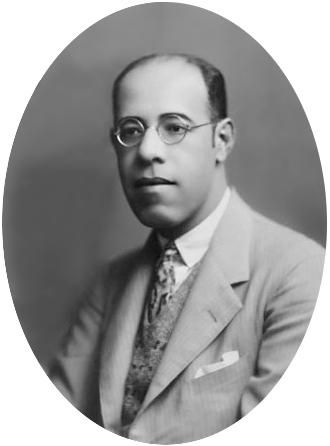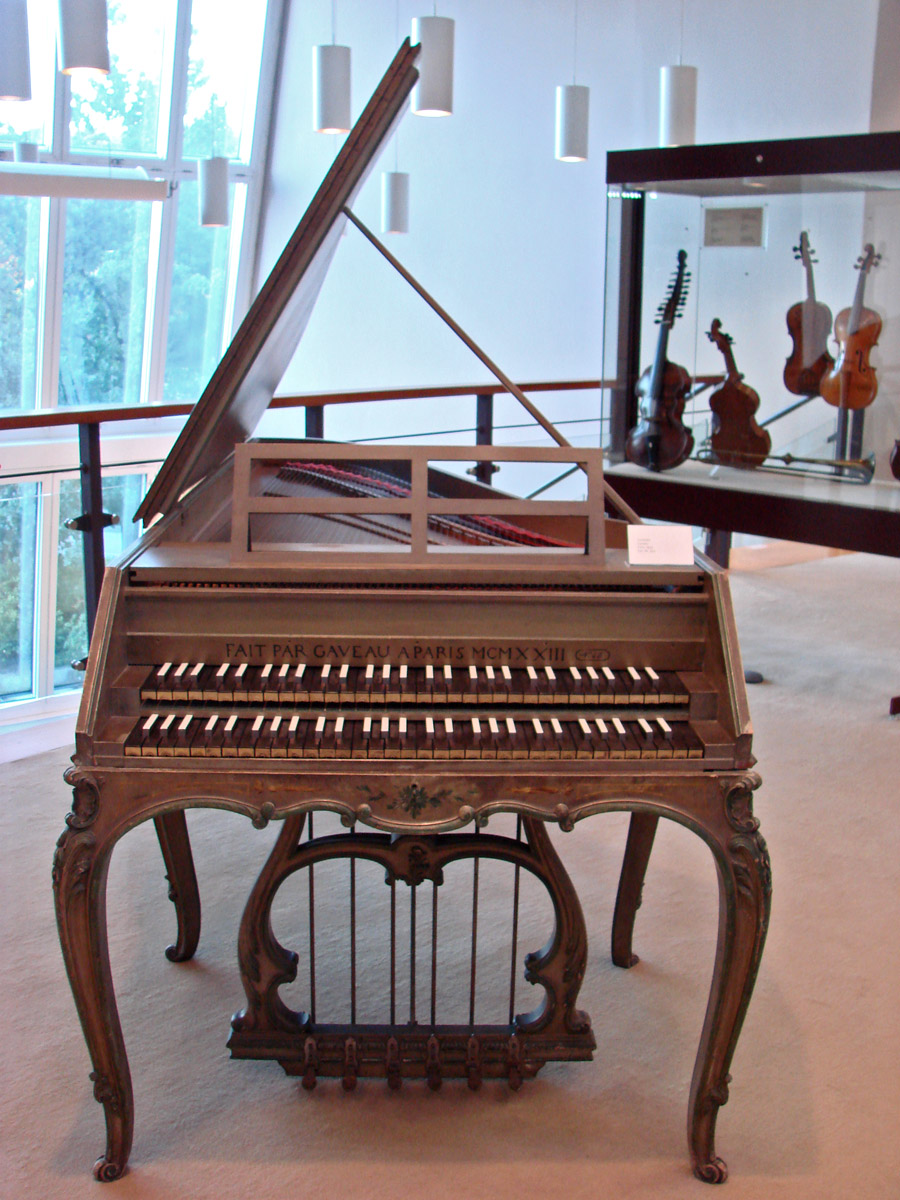|
Chôros No. 2
''Chôros No. 2'' is a duet for flute and clarinet written in 1924 by the Brazilian composer Heitor Villa-Lobos. It is part of a series of fourteen numbered compositions collectively titled ''Chôros'', ranging from solos for guitar and for piano up to works scored for soloist or chorus with orchestra or multiple orchestras. and in duration up to over an hour. ''Chôros No. 2'' is the shortest in the series, a performance lasting only about two-and-a-half minutes. History In 1920, Villa-Lobos composed a guitar piece first titled ''Chôros No. 1, Chôro típico'', and slightly later republished as ''Choro, Chôro típico brasileiro'', taking his title from an improvisational genre of Brazilian instrumental popular music that originated in Rio de Janeiro in the nineteenth century. The Portuguese word choro (pronounced [ˈʃoɾu]), means "cry" or "lament", though most music of this type is far from being sorrowful. Four years later, at the time of his first visit to Paris, he decid ... [...More Info...] [...Related Items...] OR: [Wikipedia] [Google] [Baidu] |
Chôros
''Chôros'' is the title of a series of compositions by the Brazilian composer Heitor Villa-Lobos, composed between 1920 and 1929. Origin and conception The word ''chôro'' (; nowadays spelled simply ''choro'') is Portuguese for "weeping", "cry", and came to be the name used for music played by an ensemble of Brazilian street musicians (called ''chorões'') using both African and European instruments, who improvise in a free and often dissonant kind of counterpoint called ''contracanto''. In this context, the term does not refer to any definite form of composition, but rather includes a variety of Brazilian types. Villa-Lobos described the basic concept of his ''Chôros'' as a "brasilofonia"—an extension of the popular street-musicians' chôro to a pan-Brazilian synthesis of native folklore, both Indian and popular. The tenth work in the series is for mixed choir and large orchestra, and quotes at length from a popular song, originally composed as an instrumental schottische ... [...More Info...] [...Related Items...] OR: [Wikipedia] [Google] [Baidu] |
Whole Tone Scale
In music, a whole-tone scale is a scale (music), scale in which each Musical note, note is separated from its neighbors by the interval (music), interval of a whole tone. In twelve-tone equal temperament, there are only two Complement (music)#Aggregate complementation, complementary whole-tone scales, both six-note or ''Hexatonic scale, hexatonic'' scales. A single whole-tone scale can also be thought of as a "six-tone equal temperament". : : The whole-tone scale has no leading tone and because all tones are the same distance apart, "no single tone stands out, [and] the scale creates a blurred, indistinct effect". This effect is especially emphasised by the fact that triad (music), triads built on such scale tones are all augmented triads. Indeed, all six tones of a whole-tone scale can be played simply with two augmented triads whose roots are a major second apart. Since they are symmetric scale, symmetrical, whole-tone scales do not give a strong impression of the tonic ( ... [...More Info...] [...Related Items...] OR: [Wikipedia] [Google] [Baidu] |
Music With Dedications
Music is the arrangement of sound to create some combination of form, harmony, melody, rhythm, or otherwise expressive content. Music is generally agreed to be a cultural universal that is present in all human societies. Definitions of music vary widely in substance and approach. While scholars agree that music is defined by a small number of specific elements, there is no consensus as to what these necessary elements are. Music is often characterized as a highly versatile medium for expressing human creativity. Diverse activities are involved in the creation of music, and are often divided into categories of composition, improvisation, and performance. Music may be performed using a wide variety of musical instruments, including the human voice. It can also be composed, sequenced, or otherwise produced to be indirectly played mechanically or electronically, such as via a music box, barrel organ, or digital audio workstation software on a computer. Music often plays a key r ... [...More Info...] [...Related Items...] OR: [Wikipedia] [Google] [Baidu] |
Compositions For Clarinet
Composition or Compositions may refer to: Arts and literature *Composition (dance), practice and teaching of choreography *Composition (language), in literature and rhetoric, producing a work in spoken tradition and written discourse, to include visuals and digital space *Composition (visual arts), the plan, placement or arrangement of the elements of art in a work * ''Composition'' (Peeters), a 1921 painting by Jozef Peeters *Composition studies, the professional field of writing instruction * ''Compositions'' (album), an album by Anita Baker *Digital compositing, the practice of digitally piecing together a still image or video *Musical composition, an original piece of music, or the process of creating a new piece Computer science *Compose key, a key on a computer keyboard *Compositing window manager a component of a computer's graphical user interface that draws windows and/or their borders *Function composition (computer science), an act or mechanism to combine simple functi ... [...More Info...] [...Related Items...] OR: [Wikipedia] [Google] [Baidu] |
1924 Compositions
Nineteen or 19 may refer to: * 19 (number) * One of the years 19 BC, AD 19, 1919, 2019 Films * ''19'' (film), a 2001 Japanese film * ''Nineteen'' (1987 film), a 1987 science fiction film * '' 19-Nineteen'', a 2009 South Korean film * '' Diciannove'', a 2024 Italian drama film informally referred to as "Nineteen" in some sources Science * Potassium, an alkali metal * 19 Fortuna, an asteroid Music * 19 (band), a Japanese pop music duo Albums * ''19'' (Adele album), 2008 * ''19'', a 2003 album by Alsou * ''19'', a 2006 album by Evan Yo * ''19'', a 2018 album by MHD * ''19'', one half of the double album '' 63/19'' by Kool A.D. * ''Number Nineteen'', a 1971 album by American jazz pianist Mal Waldron * ''XIX'' (EP), a 2019 EP by 1the9 Songs * "19" (song), a 1985 song by British musician Paul Hardcastle * "Stone in Focus", officially "#19", a composition by Aphex Twin * "Nineteen", a song from the 1992 album ''Refugee'' by Bad4Good * "Nineteen", a song from the 20 ... [...More Info...] [...Related Items...] OR: [Wikipedia] [Google] [Baidu] |
Chamber Music By Heitor Villa-Lobos
Chamber or The Chamber may refer to: Organizations and government *Chamber of commerce, a form of business network *Legislative chamber, a deliberative assembly within a legislature *Debate chamber, a room for people to discuss and debate Arts and entertainment *Chamber (character), in Marvel comics * ''The Chamber'' (game show), an American TV show * ''The Chamber'' (novel), by John Grisham, 1994 ** ''The Chamber'' (1996 film), based on the novel * ''The Chamber'' (2016 film), a survival film * , a German musical ensemble Business * Barristers' chamber - office used by Lawyers Other uses * Chamber (firearms), part of a weapon * Combustion chamber, part of an engine in which fuel is burned * Environmental chamber, used in testing environmental conditions * Execution chamber, where capital punishment is carried out * Gas chamber, apparatus for killing humans or animals * Chambar, or Chamber, a town in Pakistan See also * Chambers (other) * Chamber music (disam ... [...More Info...] [...Related Items...] OR: [Wikipedia] [Google] [Baidu] |
Octatonic Scale
An octatonic scale is any eight-note musical scale. However, the term most often refers to the ancohemitonic symmetric scale composed of alternating whole and half steps, as shown at right. In classical theory (in contrast to jazz theory), this symmetrical scale is commonly called the ''octatonic scale'' (or the ''octatonic collection''), although there are a total of 43 enharmonically inequivalent, transpositionally inequivalent eight-note sets. The earliest systematic treatment of the octatonic scale was in Edmond de Polignac's unpublished treatise "Étude sur les successions alternantes de tons et demi-tons (Et sur la gamme dite majeure-mineure)" (''Study of the Succession of Alternating Whole Tones and Semitones (and of the so-called Major-Minor Scale)'') from c. 1879, which preceded Vito Frazzi's ''Scale alternate per pianoforte'' of 1930 by 50 years. Nomenclature In Saint Petersburg at the turn of the 20th century, this scale had become so familiar in the circle of ... [...More Info...] [...Related Items...] OR: [Wikipedia] [Google] [Baidu] |
Gaveau
Gaveau of Paris was a French piano manufacturer. The company was established by Joseph Gabriel Gaveau in 1847 in Paris and was one of the three largest piano makers in France (after Érard and Pleyel). Its factory was located at Fontenay-sous-Bois. Some Gaveau pianos were constructed with art cabinets. Many pianos have been equipped with pneumatic systems (Odeola, Ampico and Welte). In 1960, Gaveau merged with Érard. From 1971 to 1994 Gaveau pianos were made by pianoforte manufacturing company Wilhelm Schimmel. The brand is currently owned by Manufacture Française de Pianos, the same company that owns the Pleyel and Erard brands. Today, Manufacture Française de Pianos manufactures certain models under the Gaveau name. Family competition Joseph Gabriel Gaveau had six children, and Étienne Gaveau received competition from his brothers. Gabriel Gaveau was established in 1911. Gabriel Gaveau made some pianos with pedal or Duo-Art systems, and was located in 1919, 55-57 Av. M ... [...More Info...] [...Related Items...] OR: [Wikipedia] [Google] [Baidu] |
Heitor Villa-Lobos
Heitor Villa-Lobos (March 5, 1887November 17, 1959) was a Brazilian composer, conductor, cellist, and classical guitarist described as "the single most significant creative figure in 20th-century Brazilian art music". Villa-Lobos has globally become one of the most recognizable South American composers in music history. A prolific composer, he wrote numerous orchestral, chamber, instrumental and vocal works, totaling over 2,000 works by his death in 1959. His music was influenced by both Brazilian folk music and stylistic elements from the European classical tradition, as exemplified by his '' Bachianas Brasileiras'' (Brazilian Bach-pieces) and his Chôros. His Etudes for classical guitar (1929) were dedicated to Andrés Segovia, while his ''5 Preludes'' (1940) were dedicated to his spouse Arminda Neves d'Almeida, a.k.a. "Mindinha". Both are important works in the classical guitar repertory. Biography Youth and exploration Villa-Lobos was born in Rio de Janeiro. His father, Ra ... [...More Info...] [...Related Items...] OR: [Wikipedia] [Google] [Baidu] |
Louis Cahuzac
Louis (Jean Baptiste) Cahuzac (12 July 1880 – 9 August 1960) was a French clarinetist and composer. Cahuzac was an outstanding performer and one of the few clarinetists who made a career as a soloist in the first part of the 20th century. Life and career Louis Cahuzac was born in Quarante, in Languedoc, in the south of France. His teachers were Felix Pagès in Toulouse conservatoire and Cyrille Rose in the Paris Conservatory. Cahuzac made the first recording of Carl Nielsen's Clarinet Concerto, a piece originally written for the Danish clarinetist Aage Oxenvad. On 22 November 1956, at the age of 76, he recorded the Clarinet Concerto in A major by Paul Hindemith for the EMI music label under the composer's baton. He was a great teacher also and many students became famous like Eduard Brunner (Munich's Bavarian Radio Symphony), Yona Ettlinger, Hans Rudolph Stalder, Gervase de Peyer, André Boutard (Paris Opera) or Gilbert Voisin (Geneva international prize winner in 1 ... [...More Info...] [...Related Items...] OR: [Wikipedia] [Google] [Baidu] |




